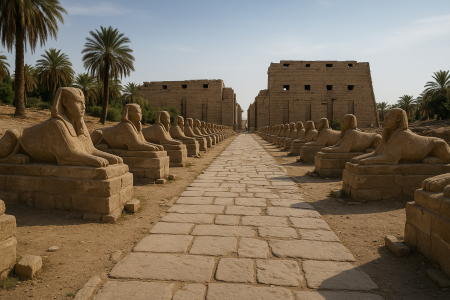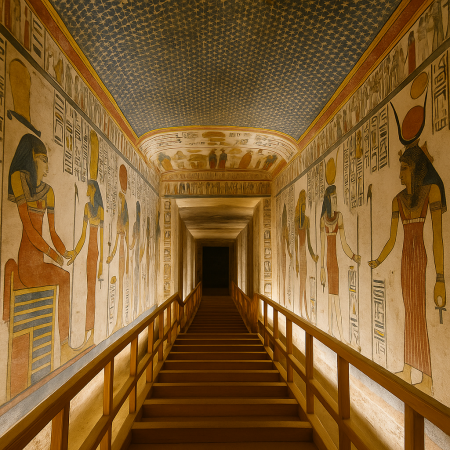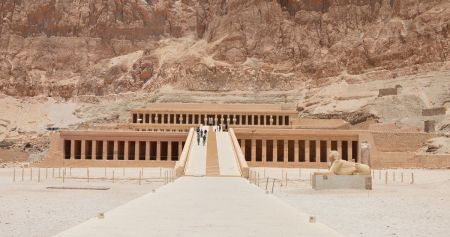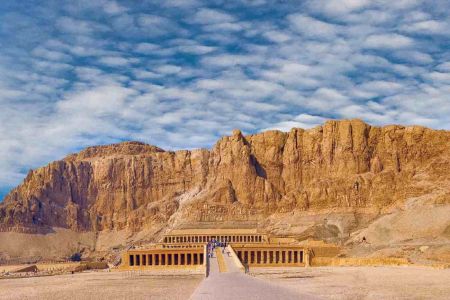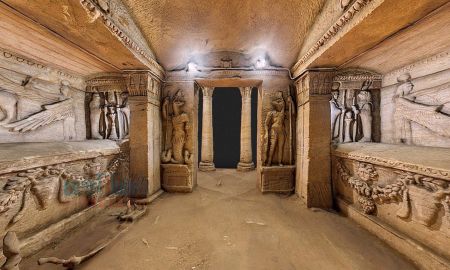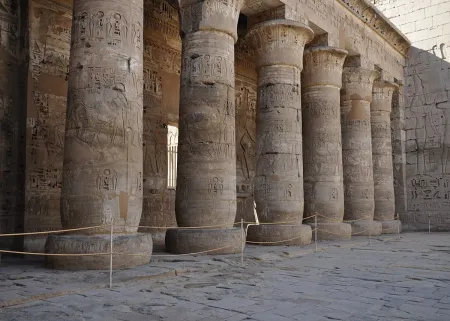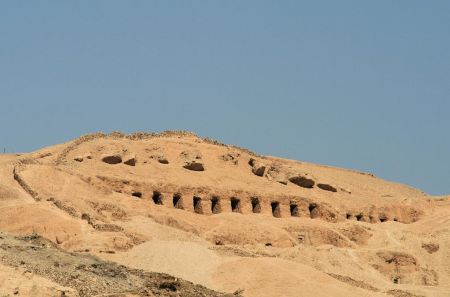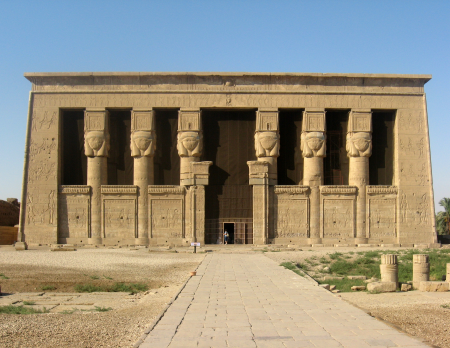Luxor Museum : Ancient Egyptian Heritage on the Nile’s East Bank

Overlooking the tranquil waters of the Nile in the heart of Luxor, the Luxor Museum offers a refined, intimate, and illuminating experience of ancient Egyptian history. Unlike the sprawling and sometimes overwhelming Egyptian Museum in Cairo, the Luxor Museum is celebrated for its selective curation, meticulous presentation, and atmospheric layout. It houses a stunning collection of artifacts unearthed from the surrounding temples and tombs of ancient Thebes, making it a must-visit destination for history lovers, scholars, and casual travelers alike.
Opened in 1975, this elegant museum offers a chronological journey through Egypt’s golden ages—from the Old Kingdom to the New Kingdom and beyond. Its exhibits showcase everything from pristine statues of pharaohs and deities to royal mummies and battle weapons, all bathed in soft lighting that enhances their majesty and mystique. Whether you’re exploring intricately carved stelae, the famed statue of Thutmose III, or funerary items from the tomb of Tutankhamun, the Luxor Museum provides a world-class narrative of ancient glory, curated with clarity and sophistication.
The Museum’s Origins and Purpose – Bringing Luxor’s Past to Light
Inception and Vision
The Luxor Museum was established under the guidance of the Egyptian Antiquities Organization (now the Supreme Council of Antiquities), with support from UNESCO. Unlike larger national museums, its purpose was focused: to exhibit treasures discovered in the Luxor area in a modern, contextually rich setting. Situated between Karnak Temple and Luxor Temple, the museum perfectly complements visits to these nearby monuments by offering deeper insight into their historical and artistic context.
A Museum of Regional Significance
Every artifact in the museum was found in the surrounding region, mainly from the temples of Karnak, Luxor, and the Theban necropolis. This local focus sets the Luxor Museum apart from others—it doesn’t just display ancient Egypt, it tells the story of ancient Thebes through the lens of those who lived, ruled, and were buried here.
Highlights of the Luxor Museum Collection – Artistry and Power in Stone and Gold
The Statue of Amenhotep III and the Artistic Revolution
One of the most impressive displays in the museum is the seated statue of Amenhotep III, carved with astonishing detail and dignity. As one of the most prolific builders in Egyptian history, Amenhotep III’s reign marked a golden age of art and architecture. The statue is an embodiment of the pharaoh’s divine status and artistic legacy.
The Cachette of Luxor – A Treasure Trove Beneath the Temple
Discovered beneath Luxor Temple in 1989, the Luxor Cachette revealed a hidden pit filled with dozens of statues buried during antiquity. Today, a selection of these magnificent pieces—including statues of Hathor, Amun, and Horemheb—are on display. These works exhibit an exceptional state of preservation, and many still retain traces of their original paint and polish.
Artifacts from Tutankhamun’s Tomb
The Luxor Museum also features a collection of artifacts from Tutankhamun’s tomb, discovered in the Valley of the Kings by Howard Carter in 1922. Notable items include ceremonial weaponry, a funerary boat model, and ornate ritual statues. These relics highlight the wealth, symbolism, and artistry that surrounded the boy king’s brief but iconic reign.
The Royal Mummies Hall
Opened in 2004, the Royal Mummies Hall displays two mummies in a climate-controlled chamber: those of Ahmose I, founder of the 18th Dynasty, and Ramses I, the dynasty’s founder’s predecessor. Their preserved forms and elaborate wrappings offer a rare, sobering glimpse into ancient funerary science and royal lineage.
From pyramids to the Nile, our Egypt Travel Packages cover all the highlights.
Museum Layout and Visitor Experience – A Journey Through Timelines
Clean, Logical Display and Design
The Luxor Museum is renowned for its modern design. Unlike more crowded institutions, exhibits are spaced thoughtfully, allowing visitors to view each piece from multiple angles. Bilingual plaques in Arabic and English provide clear explanations, making the experience accessible to a wide audience.
The Upper Gallery – Warriors and Rituals
On the upper level, visitors find military-themed artifacts, including Chariots, weapons, and shields from the tomb of Tutankhamun. These items shed light on the military culture and statecraft of the New Kingdom, especially during Egypt’s imperial expansion.
The Outdoor Garden and Open-Air Sculpture Court
Outside the museum, a serene garden filled with statues, stelae, and architectural fragments provides a peaceful place for reflection. This open-air display includes items too large or weathered for indoor exhibition but still rich in historical value.
Preservation and Curation – A Model of Modern Museology in Egypt
Advanced Conservation Standards
The Luxor Museum sets a benchmark in artifact conservation. Temperature, humidity, and lighting are carefully controlled to preserve delicate materials. The museum’s design minimizes environmental stress, ensuring the longevity of its priceless collection.
Educational and Research Functions
In addition to its public exhibits, the museum supports academic research and hosts temporary exhibitions and educational programs. Its collaborations with institutions like the American Research Center in Egypt (ARCE) help expand the public’s understanding of ancient Thebes.
Visiting the Luxor Museum – Practical Information for Travelers
Location and Accessibility
The museum is located on Corniche El-Nil Street in Luxor, just a short walk or taxi ride from both Luxor Temple and the city center. It’s open daily, with extended hours in the evening—perfect for combining a museum visit with a nighttime temple tour.
Entry Fees and Guided Tours
Entry is modestly priced, with discounts for students and residents. Guides are available at the entrance, or you can rent an audio guide to enhance your visit. Photography is allowed, though flash is prohibited inside.
Best Time to Visit
Evenings are ideal for avoiding tour group crowds and experiencing the museum’s moody lighting. If visiting in the summer, the air-conditioned interior offers a welcome respite from Luxor’s desert heat.
Searchable FAQs about the Luxor Museum
What makes the Luxor Museum unique?
Its refined collection, focus on local artifacts from Luxor and Thebes, and modern presentation distinguish it from other Egyptian museums.
How long does it take to explore the museum?
Most visitors spend 1–2 hours inside, though enthusiasts may wish to linger longer due to the detailed exhibits.
Is the Luxor Museum suitable for children or first-time visitors?
Yes. Its clear layout, bilingual signs, and manageable size make it accessible and enjoyable for all ages.
Are there artifacts from Tutankhamun at the Luxor Museum?
Yes, several items from his tomb—especially military and ceremonial pieces—are displayed in the upper gallery.
What’s the difference between the Luxor Museum and the Mummification Museum?
The Luxor Museum offers a broad look at Theban art and history, while the nearby Mummification Museum focuses specifically on the embalming process and funerary rituals.
Conclusion – Luxor Museum: The Soul of Ancient Thebes in One Elegant Space
The Luxor Museum distills the essence of Egypt’s imperial splendor into one elegant, unforgettable experience. With its curated focus on quality over quantity, it brings you face-to-face with the artistry, power, and spirituality of ancient Thebes. Whether you’re a curious traveler, a passionate Egyptologist, or a seeker of cultural depth, the Luxor Museum stands as a serene sanctuary where the Nile whispers stories of kings, gods, and eternal life.


